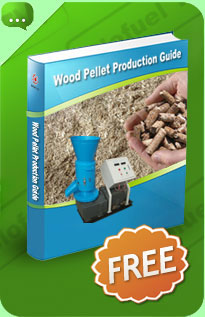Wood Pellet Makers
Wood pellet makers are accustomed to form various raw materials into pellets for feed, bedding or fuel. Wood pellet makers are also known as the pellet mills, pellet presses or pellet machines. Either term is really a valid description for that equipment.
Wood Pellet Makers
More and more people today are thinking about wood pellet makers to make their very own fuel pellets to heat their home. We promote a range of pellet production equipment, including large and small wood pellet makers. These wood pellet makers are known as flat die pellet mills or pellet makers. The material is entered into the top of the machine, and it is compressed between a horizontally mounted die. These wood pellet makers are generally used for small to medium scale pellet production, however large scale production can also be achieved by installing multiple wood pellet makers. The pellet maker must be fed raw material that has been reduced to small particles. The way to achieve this really is to make use of a hammer mill. This can produce particle of 6mm or below. A wood pellet maker generally has a lower gearing to process wood. The very first pellet mills were introduced to produce animal feed pellets from grasses and hay. However these materials are much easier to process and also have a lower density. To produce wood pellets more torque or power is required. The wood pellet makers and larger pellet makers we promote are geared suitably to process both grasses and wood into pellets.
Pellet Maker Material Moisture Content
You will find various attributes the raw material requires before it may be processed into pellets. Probably the most crucial material characteristics is moisture content. Normally the raw material should be around 15% water. Higher or lower will affect pellet quality, wood pellet makers productivity and power consumption. Therefore for many raw materials a dryer will be required prior to the wood pellet makers.
We also promote a variety of dryers, including air current dryers and rotary dryers. Air current dryers are also known as pipe dryers or flash dryers. The material is carried in a hot air stream towards the end from the pipe, where the hot moist air and dry raw material are separated by a cyclone separator. Pipe dryers are generally used for small scale production. For larger productivities a rotary dryer is used. The raw material is contained inside a rotating drum. And can handle much greater volume of material.

